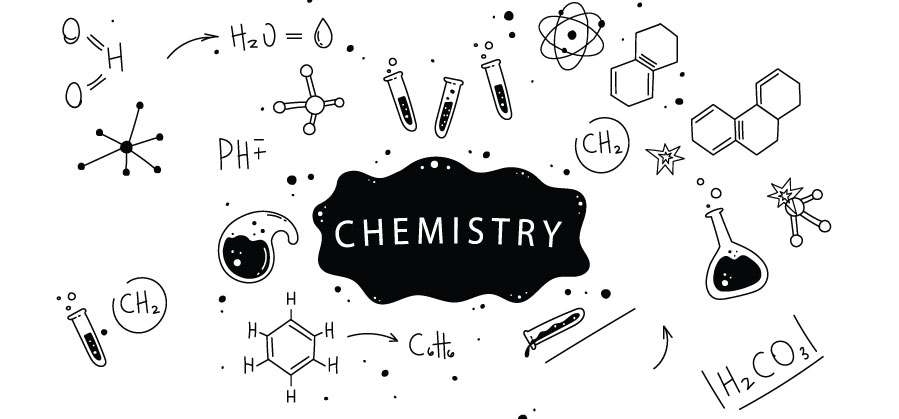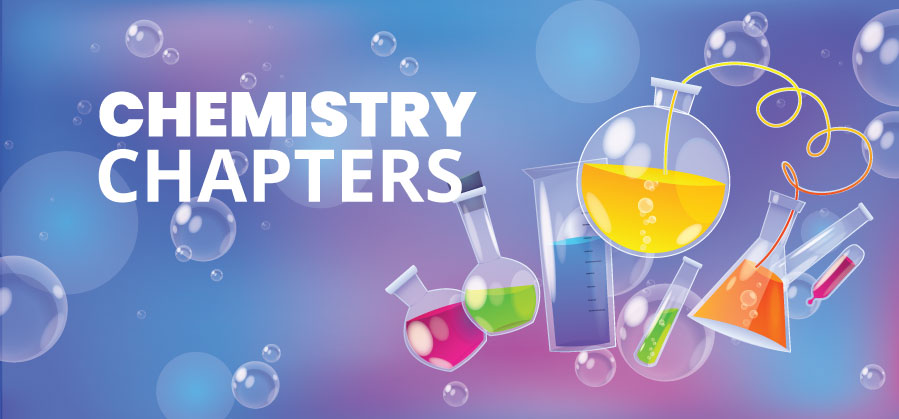- MyAssignmentHelpAu
- 11 Jan 2022
Are you thinking about pursuing Inorganic chemistry? You have certainly landed on the right page.

We are here to help you understand every aspect of Inorganic Chemistry. Let's get started.
When it comes to the term organic, it actually means compounds that are filled with carbon atoms. However, when it comes to Inorganic Chemistry, it refers to the world of compounds that do not have any association with the carbon-hydrogen atoms.
Putting it in simpler words, Organic chemistry is completely the opposite of organic. Any matter or substance which is not filled with carbon-hydrogen bonding belongs to this section of chemistry. If you are thinking about the substances that have a significant role in this domain, it includes salts, metals, and several other chemical substances.
Inorganic Compounds And Elements: A Brief Overview
There are more than 100,000 substances that are acknowledged as inorganic compounds on the planet Earth. This branch of chemistry helps you learn more about how these compounds behave and also assists you in understanding their properties. You get to learn more about their chemical and physical characteristics as well. If you have studied the period table, all the elements except hydrogen and carbon fall in the category of inorganic compounds.
Many of the inorganic elements are very important in terms of a technological domain that includes nickel, iron, titanium, copper, and more. First, these elements are considered for different purposes electrically or even structurally. Secondly, the transition of inorganic metals is forming many very useful alloys. It is done as they combine with other metallic elements or even with each other.
Before jumping more into the world of inorganic compounds, let's first understand what chemistry is to take things ahead a lot more convincingly.
What Is Chemistry?

It is basically the study of elements with which the matter is made or composed when it comes to chemistry. This field of study is mostly dealing with experiments. Here, you learn more about the results when two or more elements or substances are mixed. In addition, you learn how you utilize the results of different experiments.
Fortunately, there is no particular risk to safety and health while you perform these experiments and understand the world of chemistry a lot better. It is the job of scientists to innovate, and the field of chemistry lets them with open hands. You might find more than 100s of elements that make up different matter available on our planet or universe. All of them combine with each other to make the matter of our planet and even the universe. In fact, they all combine to make an unlimited number of compounds.
A chemical compound is made of atoms that belong to different elements. With the help of a chemical bond, the atoms of different elements are stuck together. These bonds are quite strong. This is the reason why the compound looks like it is made of a single element. First, atoms come together to form a molecule, and then molecules join to create a compound.
When it comes to a chemical formula, it is basically a notation that is taken into consideration by the scientists for presenting the amount and type of atoms combined to create the respective molecule. This is done with the use of numeric subscriptions and atomic symbols. It is an easy-to-understand representation of the written form of the three-dimensional molecule available in the compound. This formula helps in providing complete information about the substance that includes the atoms used to get it developed. This type of formula generally has three types: empirical formula, structural formula, and molecular formula.
Chapters Covered Under Inorganic Chemistry

Now that you have a basic understanding of chemistry and organic and inorganic chemistry let's move ahead. Here we are going to discuss the chapters you are going to learn in the subject of inorganic chemistry. Take a look:
1. Organometallic Chemistry
In this chapter of Organometallic Chemistry, you are going to learn about this interdisciplinary field of science and how it has grown significantly in the last 4 to 5 decades in the domain of Inorganic Chemistry. In this chapter, you get to learn about the list of organometallic compounds and how it has helped you understand various chemical bonds and the nature of the same.
These compounds are basically taken into usage as homogeneous catalysis agents for different purposes. You can learn about different insights into organometallic chemistry while pursuing this chapter. This type of chemistry basically refers to organometallic compounds. Here, you learn how several compounds are fully identical without these bonds. You learn how compounds with metallic bonds of covalent nature can be alternatives to each other. It actually combines the study of organic chemistry with inorganic chemistry.
2. Transition Elements
The elements partially filled with d-orbitals in the penultimate shell are acknowledged as transition elements. With the help of this conceptual definition, you learn to identify a transition element just by checking its electronic configuration. The definition of the same excludes cadmium, zinc, and even mercury. They are excluded because they do not have d-orbitals in their penultimate shell.
But, yes, they are acknowledged as transition elements. The reason is their properties that are basically an extension of an element that belonged to this category of inorganic compound. Not only this but zinc is also considered as the bridge between the representative elements and transition ones.
One of the most highlighted characteristics that are shared by the 24 elements is that they all belong to the metal category. In fact, most of the 24 elements have the attributes of being solid, hard, and even lustrous. In addition, these elements come with high boiling and melting points and are good conductors of electricity and heat. These elements' range is considered in these properties so, the statements made can be compared to the general attributes of all the other elements.
3. Coordination Chemistry
This is another chapter that you are going to cover while pursuing the course of inorganic chemistry. When it comes to coordination compounds, they were in this part of the world long before the rise of inorganic chemistry. Bonding and systematic structure assessment were initiated in the world of coordination chemistry with the Tassaert inquisitiveness. The different chemists took this further until the 19th century, namely Jorgensen, Alfred Werner, and Wilhelm Blomstrand. Wenner's theory of coordination became the foundation of modern coordination chemistry with time.
4. P-Block Elements
In this chapter of inorganic chemistry, you learn about the elements stationed in groups 13 and 18 of the periodic table. The specified group is acknowledged as p-block. The attributes of the p block elements of inorganic chemistry are mostly similar to that of other block ones. These are highly inspired and influenced through their ionization enthalpy, electron gain enthalpy, atomic size, and electronegativity.
As the second-period elements do not have d-orbitals and the presence of off- and d- orbitals in the elements that are a bit heavier do play a significant role on role in terms of their properties. This is the reason why p-block elements are quite different from the ones at lighter congeners.
Inorganic Chemistry: Classification
Take a look at how inorganic compounds are classified:
- Bases: A base is a form of a compound or substance that is known for producing hydroxyl ions as and when it has been kept in water. Few of the bases, calcium hydroxide, potassium hydroxide, sodium hydroxide, ammonia, are also known for producing OH- ions as and when they are dissolved in water.
- Acids: When it comes to Acids, these are compounds that dissolve in water and are known for producing H+ ions or hydrogen ions. If you are thinking about the examples related to these acids, then a few of them are citric acid, Hydrochloric acid, vinegar, sulphuric acid, and a lot more.
- Oxides: Talking about oxides, these are compounds that are filled with one oxygen atom.
- Salts: You might be knowing the term salt. It is basically the compound that is formed when a base and an acid react to each other. If you are thinking about the example, then the sodium hydroxide in salt is considered to be one of the typical ones in this category.
Applications of Inorganic Chemistry
When it comes to inorganic chemistry, it has been considered for several applications in different industries and fields that include Chemical, Biology, engineering, and more.
- This is also applied in the medicine domain. Not only this but it has also been acknowledged for different purposes by healthcare facilities.
- One of the most common inorganic chemistry applications has been in the form of compound sodium hydroxide or common salt. This is used for different reasons in our daily lives.
- Another form of the application comes in the name of baking soda. It is taken into consideration for the preparing different foodstuffs that include cakes as well.
- Several inorganic compounds are implied in ceramic industries as well.
- In the field of electronics, inorganic compounds are used in the form of silicon that is applied to electric circuits and may other purposes.
